A history of Hedge

Today marks the seventh birthday of Hedge. Our CEO and founder Paul Matthijs sat down to write about how Hedge came to be, how we got to today, and where we're going next. Fair warning: it’s a lot 🙂
Rollercoaster
The last seven years have been a bit of a paradox: it's all a blur, but at the same time, I remember each moment very vividly. With so many amazing things happening and meeting so many amazing people, it's been a very full seven years.
Back then, I never really liked the too-often-used rollercoaster metaphor thrown around a lot in startup circles. Most people would describe a rollercoaster as something you voluntarily sign up for, knowing it will be terrifying and exhilarating at the same time; you just don't know yet to which extent. Looking back, though, I realize it is a good fit - but with a different meaning: during a ride, you just don't have time to appreciate that corkscrew or zero-grav drop you just went through, as the next item is coming at you at max speed. That's exactly what a startup is like; you can't afford to look back because you'll get hit in the head by the next crazy thing coming at you at full speed.
Being on a rollercoaster makes it hard to take a step back and appreciate all that is happening around you. But growing from 1 app made by 4 people to 8 apps with 30 people on the team doesn't just happen overnight. Time to reflect on that past and have a look at the future.
Challenge Day
Back in 2011, I was a live & TV sound engineer specializing in out-of-the-box projects. I was working on a Dutch show for national TV called Challenge Day, handling all things sound — 60+ channels of audio, half of which were wireless. At the time, that was a crazy amount for a TV show. For live sound, not at all. So me and Thomas, now COO of Hedge, kinda had an easy job (shout out to BoomRecorder👏).
Who did not have an easy job was the data handler: Ties Versteegh NSC (yes, a DP was doing data 🤯) had the worst job of his life trying to offload 15 Canon 5Ds plus a bunch of GoPros with 8+ hours a day of footage being shot on each camera. We quickly helped him out with an AppleScript that prompted to rename the files on each card so at least they could track which file belonged to which camera. Still, offloading took so long that production had to source over a hundred CF cards to be able to continue shooting during the day (and then spending the whole evening on offloading and the next morning).
The producer noticed that we had a lot of time on our hands and understood that we were a better fit for their data handling needs. We looked into existing offloading apps, but they were all very complicated, and none of them could handle offloading multiple sources simultaneously. We needed to offload 15+ cards simultaneously, fast. Luckily for us, that year, new USB chipsets came to market, supporting hubs with more than 3 ports. We tested TP-Link's 7-port hubs, got a heap of USB 3 drives (Thunderbolt was too expensive), split the load between two Macs, and got to work.
Not entirely sure how to approach this best, we knew we now had the hardware setup that would support manually offloading clips and doing a full visual QC before doing another card swap.
The only thing we needed to do to reach Freelancer Nirvana, aka "lean back and drink coffee", was to automate the most manual bits of the process.
And that's how, in retrospect, Hedge came to light. As an AppleScript. An AppleScript that grew to automatically recognize newly connected cards, map their name (A, B, ...) to the clips on each card, copy the data, eject, open Finder for QC, transcode to ProRes using ffmpeg, read LTC, and convert it to timecode — you name it.
For the next and final season, the production moved to Avid, so we added DNxHD transcoding (thanks, bmx 👏). To cope with the added CPU load, we built a local render farm using AppleScript and Finder tags, so a dozen Macbook Pros could chug away at transcoding as soon as offloading was done. Freelancer Nirvana all over, with pizza added to the mix.
Beginnings
What to do with thousands of lines of AppleScript? Definitely not release it as is. The one thing you don't want is people using an AppleScript that they don't thoroughly understand. So, we needed to convert it into a product. We wanted to build a proper native app that would ingest media, then output something an editor could work with off the bat.
Building an app is not an easy undertaking, especially not when chugging away at it in the evenings, so I tried finding a bit of funding to be able to focus on this project full-time. I spent a month building a deck, carving our vision and narrative, and lo and behold, we found an angel investor. That day was the start of a new life, and I am so, so grateful for that. Life has definitely not been easier since (ask my wife), but having a new-found purpose changes everything.
It took us most of the Summer of 2015 to find out what we actually wanted to build, what we could build given the amount of money we had at hand, and which skills we lacked. We decided that building an app that moved data from shoot to post in one go was a bit too much to handle in one go. It was simply easier and thus less risky to start at the beginning of the workflow: offloading camera cards.
While doing so, we learned about a product called BulletProof. We had never heard of it before: it was killed off right when we started. The venerable Stu Mashwitz wrote a profound In Memoriam, which was instrumental for us. You could say Hedge is the phoenix risen out of the ashes of BulletProof. Stu, we still haven't met, but we couldn't have done it without your article - even today, it’s compulsory reading for new team members.
Knowing what you don't know is key when building a product. As we had never brought a product to market before, we convinced Boy, a Dutch indie developer, to join us and help us build and launch Hedge. Jeroen, Hedge's product owner to this day, also joined us, and with the four of us, we got going.
What's in a name
Boy also came up with the name Hedge, a nod to the Dutch saying "to throw something over the hedge," which loosely translates as "here you go, not my problem anymore". When Thomas and I were on set, we realized data is a hot potato: the second a backup is done, it's "thrown over the Hedge" and given to someone else. There was no peace of mind. Imagine getting that dreaded call from the producer of yesterday's job about missing clips when you're on set for the next job. So, if we could construct that proverbial hedge, no one on either side of the hedge would have to worry about getting or making calls.
Year One
Four months after starting to build Hedge, we got word that Challenge Day, the production where this journey started, was unexpectedly renewed for one more season. The perfect test case.
Thomas and I relocated to the studio and kept Slack open to report issues and friction that we’d run into. A week, 100TB, and a heap of improvements later, we had a version of an app that was smooth as butter. If this worked for such a large production, it would surely work for all less daunting productions. And it did.
End of March, we were ready for a public launch: the industry received our vision to get from shoot to post really well, and many people tried out Hedge.
As with all innovations, for some, it wasn't feature-complete: per Clayden Christensen's innovator's dilemma, an innovation is to not be regarded as disruptive if it's not cheaper, bottom-up, and most importantly "broken" (meaning feature-incomplete). We quickly learned for whom Hedge wasn't a fit, and it was as we expected: Hedge was not for DITs but for those who can't afford a DIT. Today, Hedge is in use by DITs everywhere. With the upcoming Pro version of Hedge, we’re aiming squarely at the most-demanding DIT — but only after having built feature upon feature with a bottom-up approach for years and years.
To be able to build a sustainable business, we thought we needed to sell Hedge (for Mac, at the time) as a subscription. Silverstack does that, after all. Bad call - we quickly learned most people hates subscriptions, and rightly so; if there's no recurring cost to the vendor (like with cloud storage), apps should be purchasable, not just for rent. Within 24 hours, we changed our model and made it a one-time purchase.
We gained quite some fans on day one and got a heap of feedback that really helped us shape our roadmap. Doing regular releases, we grew our user base quickly and learned more about your needs and pains. Over the Summer, we built an iOS push notification system called Connect as an attempt to get you away from your Mac and do something more useful than waiting for transfers to finish and then realized there was a huge trade show practically next door: IBC.
But it was sooooo expensive. When you're a wee startup like us, spending money is no fun. Especially not when you have no idea about what it will bring you. But as a vendor, the amount of people you can get to know and learn from is crazy. The interactions with customers alone are worth it, and really get us going. Since that first IBC, we have never skipped an NAB or IBC. Guess who our neighbors were at our first IBC and NAB? MASV and LucidLink 👋
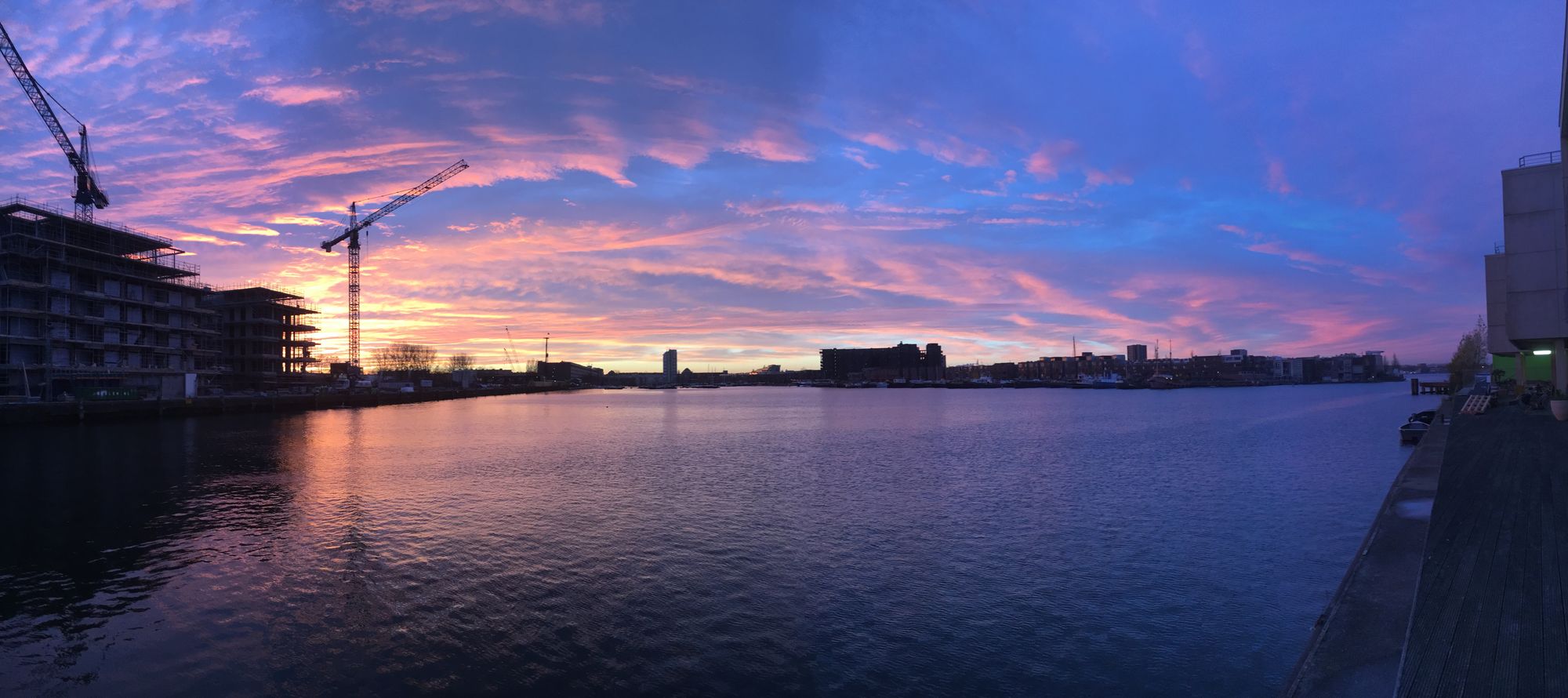
2017
The next year we ramped up with staple features like Labels and Collections, and integrations with Foolcat and Parashoot. Based on your feedback, we also knew we wanted to do a Windows version of Hedge, so Tim joined us as Head of Windows. For years to come, we'd joke that everyone with Head of in their job title was actually a team of one. Big props to Tim because until 2022, he was a team of one. Hedge for Windows came to light at the end of 2017, after 6 months of playing catch up with the Mac team, now consisting of Roelof and Bruno.
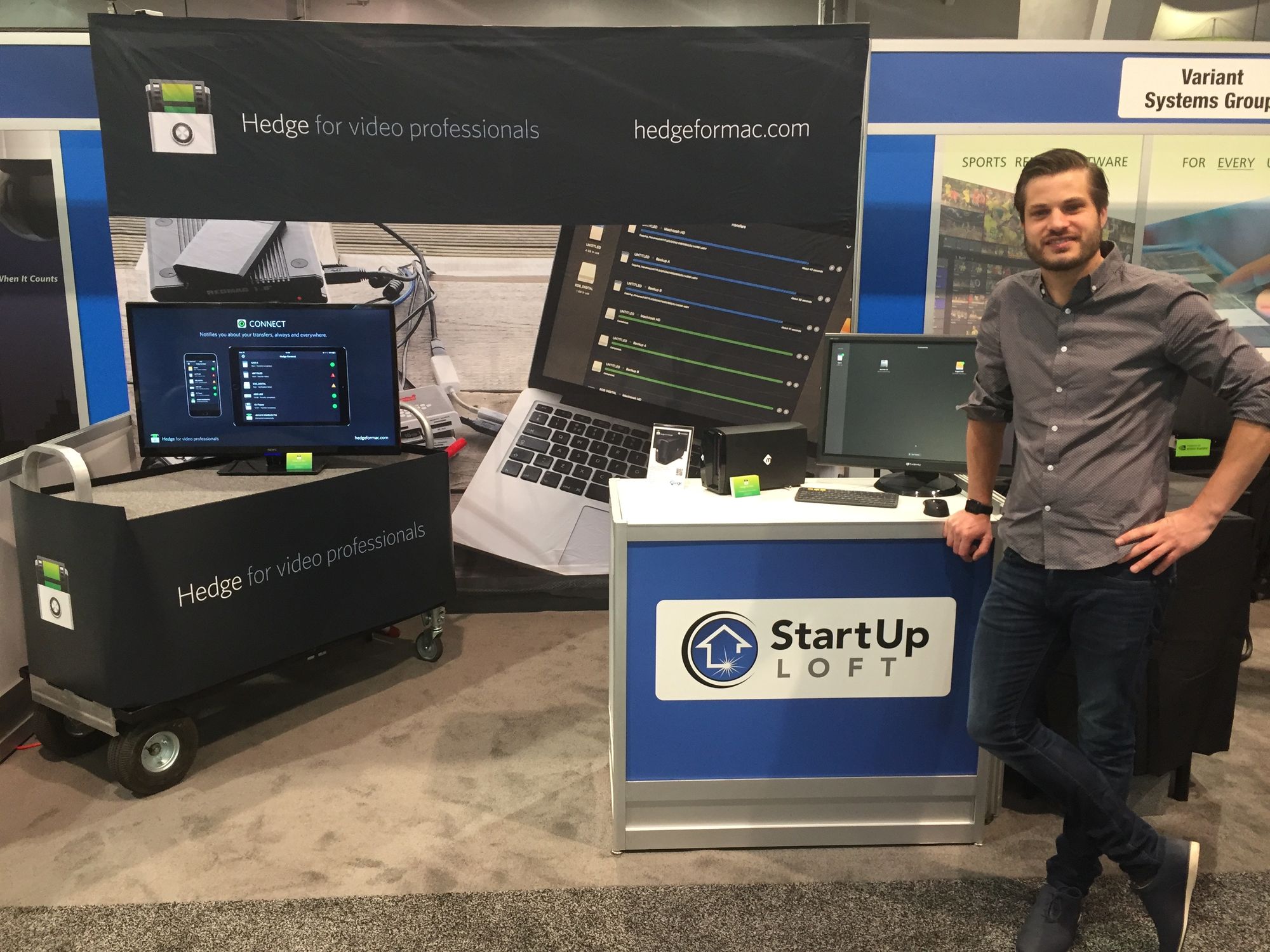
After ditching the subscription model in favor of a perpetual license, we did see we needed a way to sustain continuous updates to Hedge. Enter paid updates, where you would have a perpetual license with a year of guaranteed updates and support. Today, this is the go-to model for regular apps, but back then, it was bright, shiny, and new. Together with that non-invasive license change, we wrapped both the Mac and Windows version into a single license. Because it just sucks to have to buy a second license if you move between Macs and PCs.
Earlier in the year, I received an email from one Roger Mabon asking if we could do for LTO what we did for backups. Having no clue about LTO nor knowing who Roger was (the founder of mLogic, and G-Technology before that), I took the call. I was introduced to the wonders of this (to me) totally new, high-tech but ancient, and just baffling storage medium. We knew we were onto something with Hedge, but until that moment didn't realize that our design paradigm (no vendor lock-in, progressive disclosure, Dutch Design) would be very applicable to LTO. So, with some help from Roger and Keith Warburton of Global Distribution/Symply, we built what is now known as Canister. It was first made available to mLogic customers, then in 2018 to everyone.
2018
The next year was, in hindsight, a bit of an interbellum - we had established ourselves in the industry, and we weren't going away, so we could focus on some larger features we wanted to build for quite a while: duplicate detection and source verification. Both were needed by many, and we saw a huge uptick in sales as a result.
On top of that, you wanted reports. Having an integration with Foolcolor's Foolcat wasn't enough, as it was initially only built for RED cameras. Foolcat became a part of Hedge to allow it to be developed further, which resulted in ARRI support.
At IBC, one of our competitors approached me, a bit disgruntled, because I supposedly once stated in an interview that we would never support LTO. Never say never 😁
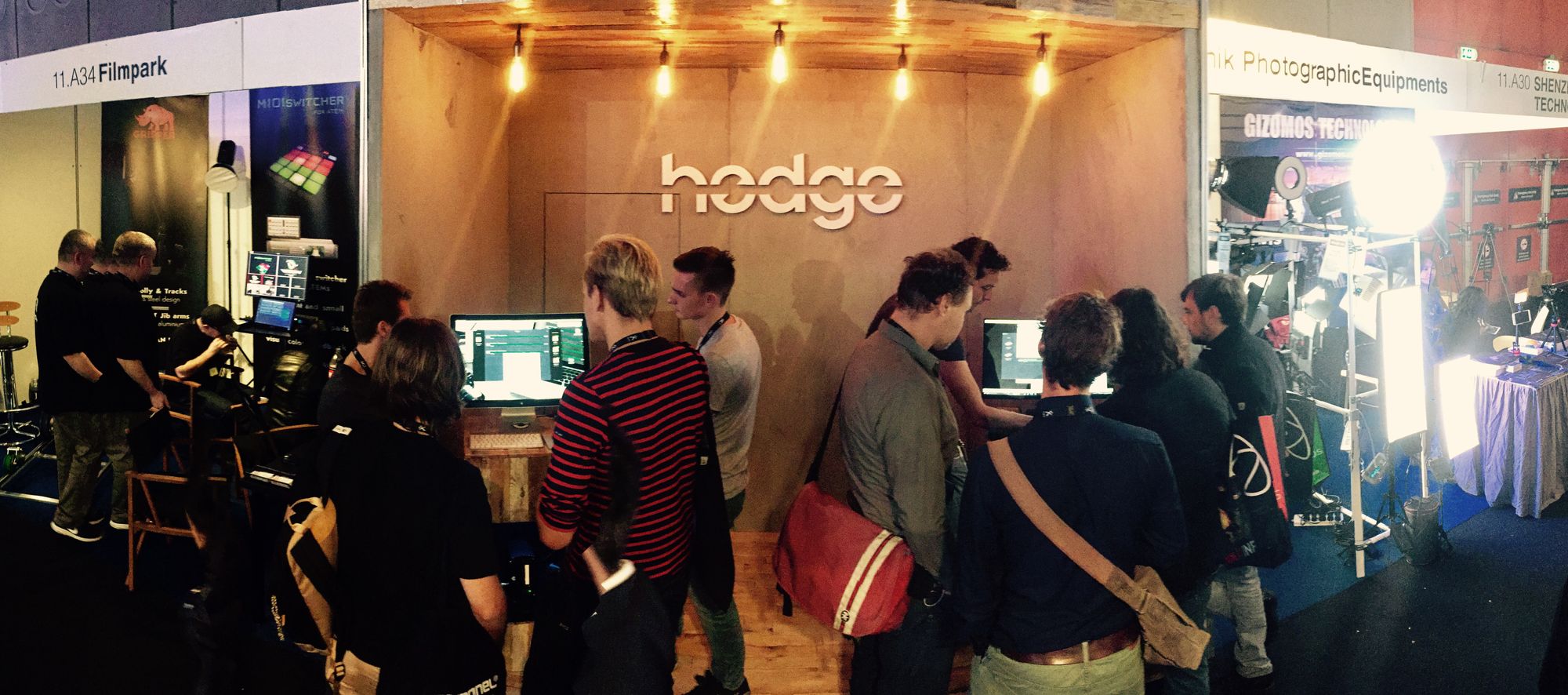
2019
By now, Hedge was maturing as an application. Perfectly suited for one-man-bands and jacks-of-all-trades while also catering to specialists like DITs and archivists.
However, we never built Hedge to be used by teams - data handling tends to be a solitary job. At the previous IBC, DPG Media and VICE came up to us with the same problem: the data handling was not done by the same person deciding on the workflow, but the productions were too diverse to lock down a single workflow.
The old approach was that the on-set backups would travel to the office, where a media manager would manually offload the media and add metadata. The media manager would know how the naming schema and folder structure the production needed. That caused delays in post-production, and it meant drives would not be freed up for the next production until a media manager was available.
So, they automated the ingest of media to allow for re-usage ASAP. After copying the media to shared storage, a MAM would automatically pick up the new media. But without metadata, the media would be hard to locate afterward. After all, the saying is, "if a clip doesn't have metadata, it doesn't exist."
We wanted to bridge the gap between offloading and ingesting without making the process itself any harder or more complicated. We designed a workflow where the workflow supervisor could build a preset for Hedge through a website, specifying how to manage each camera type used (flatten folders, filter certain file types, handle renaming) and which metadata fields were required. When offloading, the data handler presented a simple way to add the metadata. Then all that metadata traveled with the media to the office, where the MAM would process it, and all media would already be sorted and named properly. A fully hands-off workflow.
Don’t get me wrong: this workflow is not of use to 80% of our user base. However, most of its parts are; as a result of this partnership, we released Queuing, Presets, Filter & Rename, Sorting, Elements, Auto Labels, and Source Review — with the next pieces of the puzzle arriving later this year.
In the meantime, a Dutch broadcaster that was Final Cut Pro-based had an internal project to manage its libraries. It was called, you guessed it, PostLab. At some point, a new manager decided the whole workflow had to become Avid-based, and PostLab got shelved. Its creator Jasper obviously didn't like that and started looking for a way to bring PostLab to the public. He quickly realized we would be a good home for him and PostLab. We joined him up with Felix and added PostLab user #1 Felipe Baez to the mix to help us move PostLab to the cloud. In November, we publicly launched PostLab at the Creative Summit in Cupertino 🥳
2020
The year that changed everything for everyone.
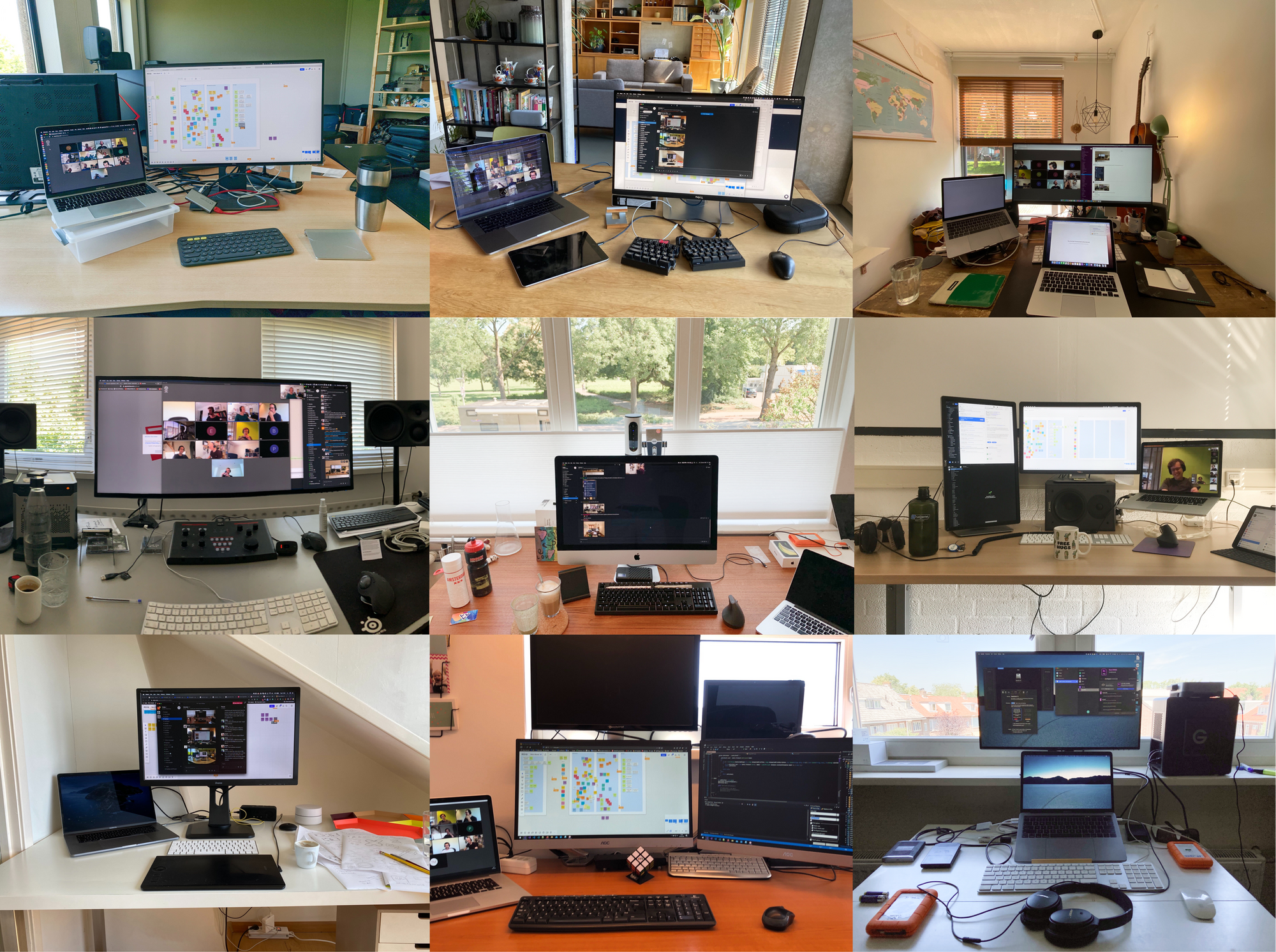
We had just brought on four more people to help with Postlab, and then there were lockdowns. Overnight, most of our revenue was gone. The whole world was scared to death, and justifiably no one was spending any money. We decided that if we'd go down, we'd do go down together - no point in laying off people now if that only gives you a few more weeks of life span. Full steam ahead, and see if there's light at the end of the tunnel.
After a few mad weeks (or months?), people got a bit to their senses and started looking frantically for new ways to be able to continue to work. We had just added support for Premiere Pro to Postlab, and together with LucidLink, we built Postlab Drive - a simpler, limited version of LucidLink aimed specifically at editors. Together, this paved the way for many to be able to move to cloud workflows without complexity or massive upfront costs.
By the end of the Summer, things got crazy. Everybody seemed to need help with their new-fangled workflows. To be honest, we struggled to keep up with the demand. Isaac, who had been managing Postlab's social media until then, joined us full-time to handle customer support, and Oli joined us as Head Of Sales (yep, another team of one - to this day). During all the lockdowns, everybody wanted shows to consume while hospitals were still scrambling - a very dualistic and confusing time now I look back at it.
The Mac and Windows teams, besides building out Postlab, kept churning out new things too: we took a bunch of our existing technologies and gave them a 2.0 upgrade: Foolcat got a full rewrite and gained BRAW support, we extended Checkpoint with an Archive mode, and Patrick, our go-to front-end freelancer, had finally joined us fulltime to build a new Connect.
2021
We thought 2020 was a crazy year, but it paled compared to 2021.
We've always tried hard to reduce stress - we don’t have overtime, prefer people not to work evenings or weekends, and have a four-day workweek. All to ensure good mental health. Still, all of that didn't suffice to reduce the team’s stress levels. The feeling of shared responsibility was too engrained into our company culture and only increased due to 2020’s hardships.
We asked the team what they preferred: take it down a notch down and, for a while, not build new things or raise money to grow the team to lighten the burden. The team unanimously opted for growth to be able to build all the new tools we realized the world desperately needed post-COVID.
Time to raise a bit of money. We opted for investors who were familiar with the industry and in it for the long haul. Now, off to find some more great people.
We've always been friends with the guys over at Lesspain, Kyno was used by many of our customers, and their Media Engine drove Foolcat. 1 + 1 = 2, so we asked if they wanted to join us. Unfortunately for us (and for Kyno users, in hindsight), they couldn’t - they were already in talks with what turned out to be Signiant. Great for them, not so much for us 😬
Lesspain joining Signiant was not only too bad for our team but also for Foolcat. We speculated Signiant would kill Kyno at some point so we needed a new media engine. But, there are not that many people in the industry that deeply understand codecs and color science. Back in 2020, we had already been working with Mike and Colin at Divergent Media on a product called PostStream. This 1+1=2 did work out. Mike and Colin joined us, and EditReady and ScopeBox became part of the Hedge product family.
In the meantime, the team continued to release updates in line with the workflow we were working on with VICE & DPG and created Codex, Scratch, and iconik integrations. We finally managed to spend serious time on Canister, too; so far, it had been a pet project of Roelof and me.
Netflix then asked us to join their Production Technology Alliance, recognizing that best practices for data handling are essential for every production. With Finder copies outlawed, DITs and data handlers no longer need to have tough discussions with producers; the same best practices apply to every production, regardless of being for Netflix or not. Besides best practices, the world also needed much better transfer drives, so we worked with our longtime friends at G-Technology (now SanDisk Pro) on what is now known as the PRO-BLADE, which is turn kicked off a big research project into increasing transfer speeds beyond what Finder and Explorer can do.
In the eye of the storm, the Postlab team was still scrambling to keep up with feature requests - we added Sync (powered by our in-house built rsync-on-steroids) and many other improvements. However, we did realize the current Postlab was not built to last. We needed to rebuild Postlab to be a hybrid between online and offline usage, with a version control engine that wasn't built for text files but for media and without the need for a subscription. That's what we spent most of the next year on - coming to you in 2023 🚀
2022
A big milestone last year was the acquisition of Mimiq. It's a super niche app, only useful to Media Composer editors that don't have a Nexis, but it does one thing, and it does it extremely well: bin locking. What it didn't do well was work on Apple silicon (not possible) and licensing (stone age). Looking back, I'm really proud of the team and Alex at Indiestor for pulling this together within weeks and rebuilding this app from scratch both on Windows and Mac while removing all the friction the existing Mimiq users were experiencing. Then we took things to the next level by adding bin locking to LucidLink in Mimiq Pro. It has been a massive overnight success, and a perfect example of our vision: an app can be great, but its licensing and cross-platform availability must be just as good to make it work.
Last year was a year of new foundations. An intermediate year. Having reached a critical team size, we needed to ensure we wouldn’t fall into the typically hyper-growth startup trap (a lack of culture). We also needed new foundations in our apps - we knew we had to bring wide codec support to EditReady as a first step towards a cross-platform media engine of our own, and Canister severely needed a SCSI back-end and a Windows version. There is the ongoing Speed research project, powered by OWC and ioDyne, and of course, Postlab's new innards. Besides that, we kicked off a range of new projects that lay the foundation for our upcoming new products. I'm so looking forward to showing all that we've been building - we typically show a lot of work in progress at trade shows, so come say hi if you visit NAB or IBC.
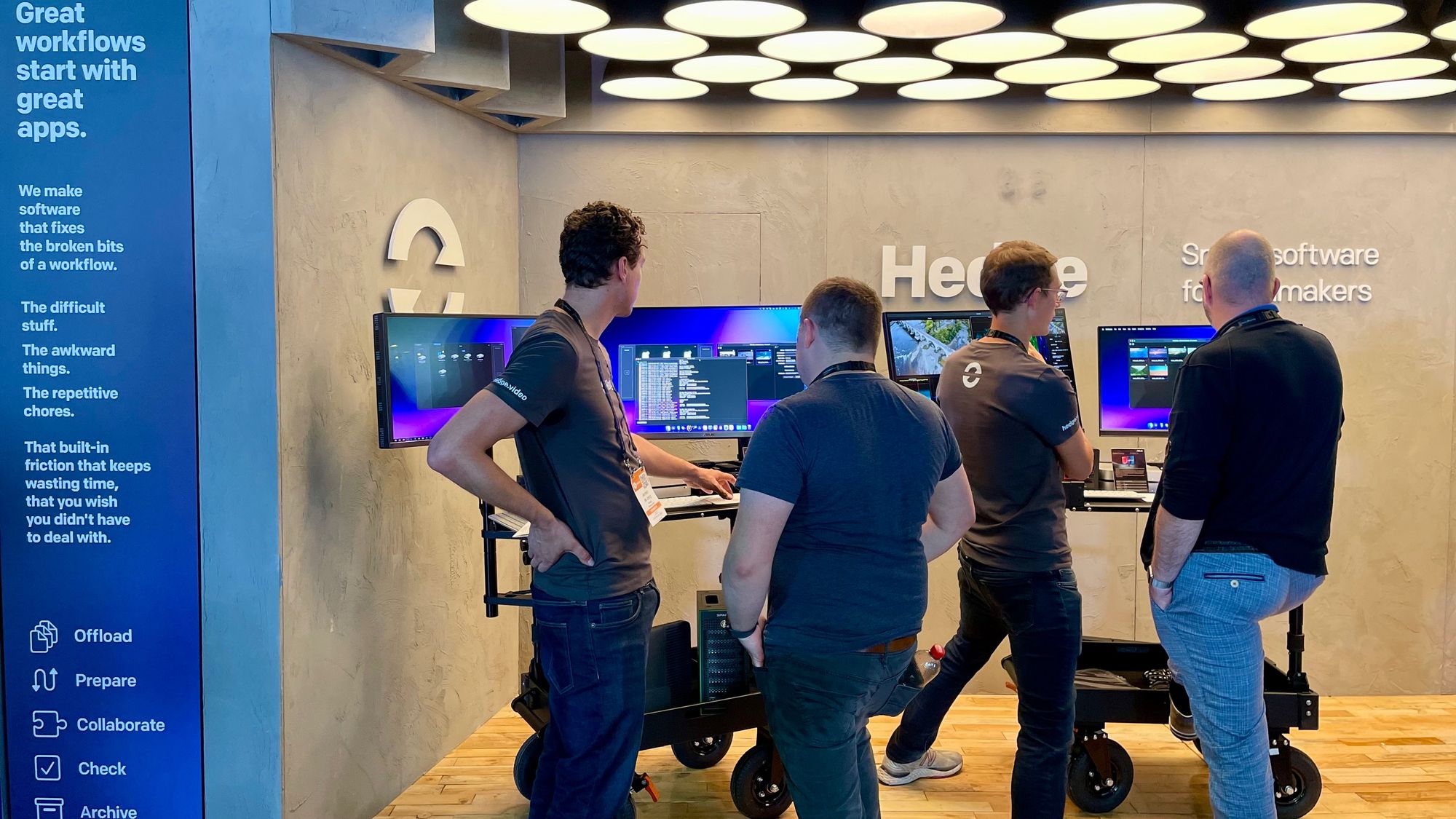
2023
Well, that’s 7 years (or actually 12) in a nutshell. You made it all to the end - back to today 🙂
Overall, we’ve grown the team quite a bit while gaining many new skills along the way. To me, even a team of 30 still feels somehow like a team of 5. It's still the same tightly-knit group of people ("one big family" 🤮) that all share the same values - even now, we're spread out between Hawaii and Ukraine across 6 timezones. It makes me proud to see a team that is intrinsically people-first and dedicated to building the hard things right - not the thing that makes the fastest buck.
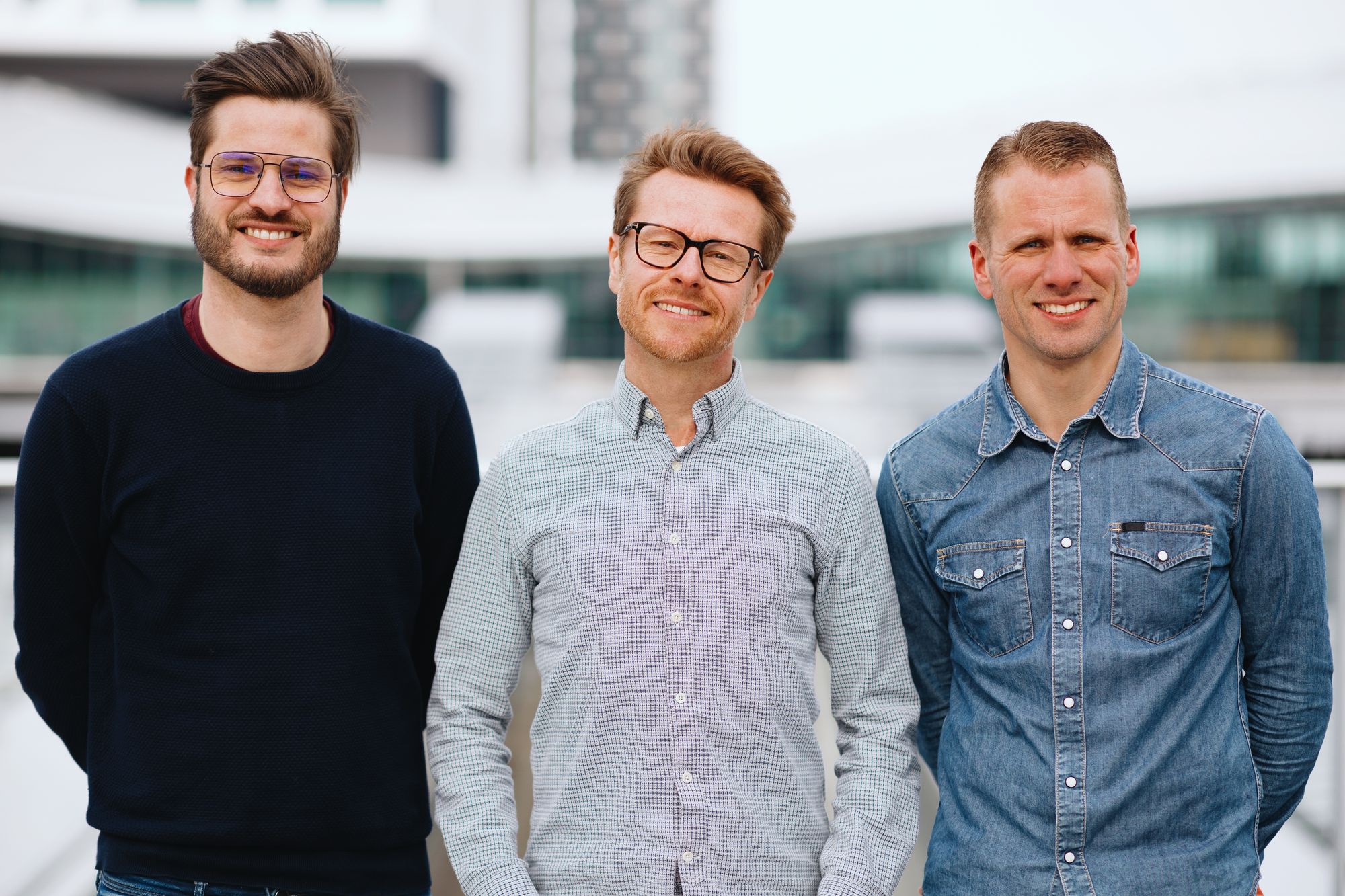
Back in 2016, we never envisioned we’d build more than one app. Today, we’re not a “one-app pony” but have grown into a technology company with a range of products and a host of intellectual property that we can utilize in multiple ways - both native and in the cloud. We’re not just growing by headcount but also growing up as a company, having managed to do something we never thought possible - to make a dent.
We’re kicking off this year with quite a few announcements and updates at NAB - just a few weeks from now. Stay tuned, and if you’re in Vegas, come visit us. If you don’t, let’s catch up another time - we have enough ideas to keep moving forward, and I'd love to hear your opinion on them 🙏
Reading List
None of this would have happened without a lot of studying, on beforehand and through the years. Besides obviously certain people, some books have been instrumental, and I like to do a quick shout-out to those too:
- The Innovators Dilemma - Clayton Christensen
- Zero To One - Peter Thiel (Don't get me started on his political views, but the book is great.)
- The Hard Thing About Hard Things - Ben Horowitz
- Give & Take - Adam Grant
- Strategy & The Fat Smoker - David Maister
- Creativity, Inc - Ed Catmull
- The Black Swan - Nassim Nicholas Taleb
- Creative Selection - Ken Kocienda
- The Lean Startup - Eric Ries
- Getting Things Done - David Allen
At some point, we realized we needed a way to get our minds off work, so we gave everyone in the company a Kindle linked to a read-all-you-can credit card. The Hedge Book Club, if you will. It's still in place today, with every new team member getting a Kindle if they want. To keep the creativity flowing, I think it's essential not to read just business books but also fiction. Here are the books that really tickled my brain (yeah, all pretty hardcore sci-fi 🤣)
- The Three-Body Problem (3 books in total, and there's a great unofficial but sanctioned 4th part to the series that explains a lot)
- Hyperion (four books)
- The Ender Saga (part 1 is the intro, parts 2-5 are the main body of work.)
- The Broken Earth trilogy
- Southern Reach trilogy
- Anathem, Cryptonomicon, Termination Shock, and more... - all by Neal Stephenson
- Watchmen - Alan Moore and Dave Gibbons

